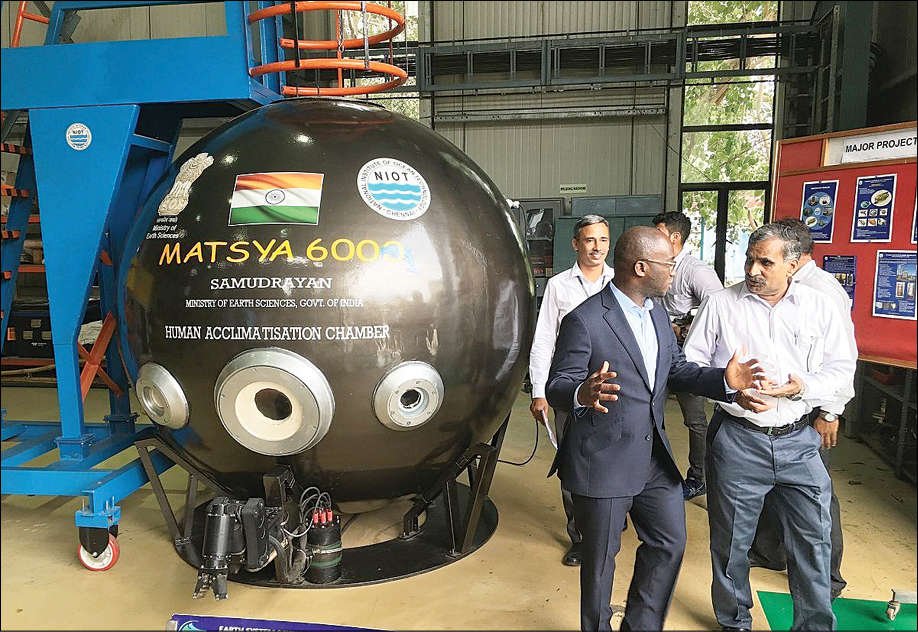Thursday, 13 November 2025

India’s ambitious deep-sea exploration initiative, the Samudrayaan mission, featuring the manned submersible Matsya, is scheduled for launch by the end of 2026. The mission aims to facilitate advanced deep-sea research and resource assessment at unprecedented depths. In parallel, India is developing Samudrajivah technology to enhance open sea cage farming, a move expected to boost the country’s food security and strengthen its blue economy efforts. Together, these initiatives reflect India’s growing focus on marine technology and sustainable ocean resource management.
India is gearing up to launch its first manned deep ocean mission, Samudrayaan, by the end of 2026. This ambitious project will deploy the submersible Matsya6000, designed to carry three crew members to a depth of 6,000 metres in the Indian Ocean. Developed by Chennai’s National Institute of Ocean Technology (NIOT), the submersible is built from titanium alloy, capable of withstanding pressures of up to 6,000 bar. Equipped with advanced scientific sensors, multi-directional propellers, and acoustic communication systems, Matsya6000 will enable detailed underwater exploration, including observation, sample collection, and experimentation.
The mission is part of the broader Deep Ocean Mission (DOM), a flagship initiative by India’s Ministry of Earth Sciences, backed by a budget of nearly Rs 4,077 crore approved in 2021. The DOM aims to propel India’s blue economy through a multi-pronged approach that includes developing technologies for deep-sea mining and manned submersibles like Samudrayaan, enabling exploration and potential commercial exploitation of polymetallic nodules at 6,000 metres depth. It also supports climate resilience by developing ocean climate change advisory services that offer projections from seasonal to decadal scales, benefiting coastal tourism and local communities.
In addition to scientific research, the mission focuses on sustainable utilization and conservation of deep-sea biodiversity through bio-prospecting of marine flora, fauna, and microbes. It also prioritizes the enhancement of marine fisheries and allied services to boost the blue economy. The DOM envisions harnessing offshore ocean thermal energy conversion technology to power desalination plants, providing energy and freshwater solutions while promoting environmental sustainability. To build human capacity and foster innovation, an advanced marine station for ocean biology is being developed, which includes an on-site business incubator to translate research into industrial applications.
Strategically, the Samudrayaan mission is expected to advance India’s indigenous deep-sea technologies and position the country among the few capable of manned submersible operations at such depths. Economically, it supports growth by enabling exploration of valuable deep-sea minerals, promoting blue trade, and creating employment opportunities, especially in shipbuilding and MSME sectors. Environmentally, it aligns with the United Nations’ Decade of Ocean Science (2021-2030), emphasizing sustainable ocean resource management and biodiversity conservation. The initiative also contributes to climate understanding and resource security by developing new models and exploring offshore energy and freshwater generation.
With the launch of Samudrayaan, India will join nations like the USA, Russia, China, France, and Japan in conducting deep-ocean crewed missions, marking a significant milestone in its maritime exploration and blue economy ambitions.